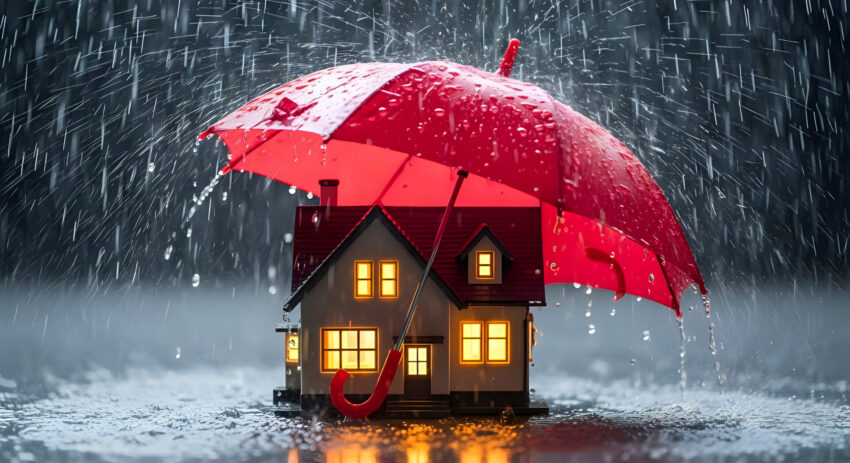Homeownership represents a significant investment and a cornerstone of personal stability. A homeowners or property insurance policy serves as a critical financial safeguard, designed to mitigate the risks associated with damage, loss, and liability. Let’s walk through the basics of a standard policy so you can be sure you have the right coverage in place.

1. Dwelling Coverage
Dwelling coverage constitutes the foundation of a homeowners insurance policy. It covers the cost to repair or rebuild your house if it’s damaged by fire, severe storms, or vandalism.
Here’s the most important thing to know: your coverage amount should be based on your home’s rebuilding cost, not its real estate market value. These are two very different numbers. Your property’s market value includes the price of the land your house sits on, which would still be there even after a disaster.
The rebuilding cost, however, is the price of the materials and labor needed to reconstruct your home from the ground up. It’s important to remember that these expenses can change over time.
Therefore, when purchasing a new homeowners insurance policy or reviewing an existing one, meticulous attention must be paid to ensuring adequate dwelling limits and all necessary supplemental protections.
2. Other Structures Coverage
If a structure isn’t directly attached to your home and serves a distinct purpose, it likely falls under this category. Examples include, but are not limited to, detached garages or workshops, garden sheds, fencing, guest houses, and in-ground swimming pools.
A key operational aspect of this coverage is its default allocation. Insurers typically automatically assign a coverage limit equivalent to 10% of your primary dwelling coverage. For instance, if your home is insured for USD$500,000, your other structures would automatically have USD$50,000 of protection.
While this standard clause offers a convenient baseline, property owners must proactively assess its sufficiency. A custom-built detached workshop or a large guest house can easily exceed this default limit. Therefore, it’s imperative to evaluate the total rebuilding cost of all outbuildings and adjust the coverage limit accordingly with your insurance agent.

3. Personal Property Coverage
This home insurance component pertains to the contents within the insured residence. It provides for the repair or replacement of personal belongings (including furniture, electronics, apparel, and appliances) if they’re stolen or destroyed by a covered peril.
A critical distinction exists within this coverage type:
- Replacement Cost Value (RCV): This preferable option disburses funds sufficient to purchase a new item of similar kind and quality without deducting depreciation.
- Actual Cash Value (ACV): This option accounts for depreciation, providing compensation only for the item’s estimated current market value, which is often insufficient for replacement.
Policyholders should maintain a detailed home inventory, preferably supported by photographic or video evidence, to substantiate claims and accurately determine necessary coverage limits.
4. Loss of Use
Should a covered event render the primary residence temporarily uninhabitable, “loss of use” coverage becomes applicable. It addresses the additional costs incurred while residing elsewhere during repairs. Covered expenses may include reasonable hotel and accommodation costs, restaurant meals exceeding customary grocery expenditures, storage fees for personal effects, and pet boarding costs, if applicable.
This coverage ensures that a property loss doesn’t precipitate a secondary financial burden related to displacement.
5. Personal Liability Protection
Liability coverage serves as a financial defense against claims (e.g. bodily injury from falls or property damage) for which the policyholder or their dependents are found legally responsible. Scenarios may include a guest sustaining an injury due to a hazardous condition on the property or accidental damage caused to a third party’s property.
This coverage assists with associated medical expenses, legal defense fees, and any court-awarded damages, up to the policy’s stipulated limit. It’s prudent to consider liability limits substantially higher than the standard minimums offered.
6. Medical Payments to Others
This is a no-fault provision that addresses minor medical expenses for individuals injured on the policyholder’s property, regardless of legal liability. It’s intended for minor incidents, such as a guest requiring sutures for a minor cut, and functions to facilitate prompt medical attention and foster goodwill, potentially averting more serious liability claims.
Critical Exclusions and Supplemental Policies
A thorough understanding of a policy’s limitations is imperative. Standard homeowners policies universally exclude specific perils, most notably:
- Flood damage: Coverage for flood damage, regardless of cause, requires a separate policy, typically procured through the National Flood Insurance Program (NFIP) or a private carrier.
- Earthquake damage: Damage resulting from earthquakes or earth movement isn’t covered under a standard policy and necessitates a separate endorsement or policy.
Property owners must evaluate their geographical risk and secure appropriate supplemental coverage where warranted.
Additional Considerations and Endorsements
Beyond the core coverages, homeowners should be aware of several critical processes and optional enhancements.
The claims process is the procedure followed after a loss occurs. You must notify your insurer, document the damage, and work with an adjuster.
For tenants, renters insurance provides essential protection for personal property and liability, mirroring aspects of a homeowners policy but for a rented dwelling. Meanwhile, seniors utilizing a reverse mortgage should note that maintaining adequate homeowners insurance is a mandatory loan requirement to protect the lender’s collateral.
Consider a personal property endorsement (or “rider”) for high-value items like jewelry or art for broader coverage and higher limits than a standard policy. Furthermore, investing in a home security system (e.g., burglar alarms, water leak sensors) can not only provide peace of mind, but it may also qualify you for a premium discount from your insurer by mitigating risk.
The Bottom Line
Home insurance policies are complex but essential for risk management. Take the time to choose the right property insurance coverage and keep it up to date to protect your investment and have true peace of mind. If you’re unsure where to start, the best move is to just talk to a professional. They can help you understand your options and make sure you’ve got the protection you need.
